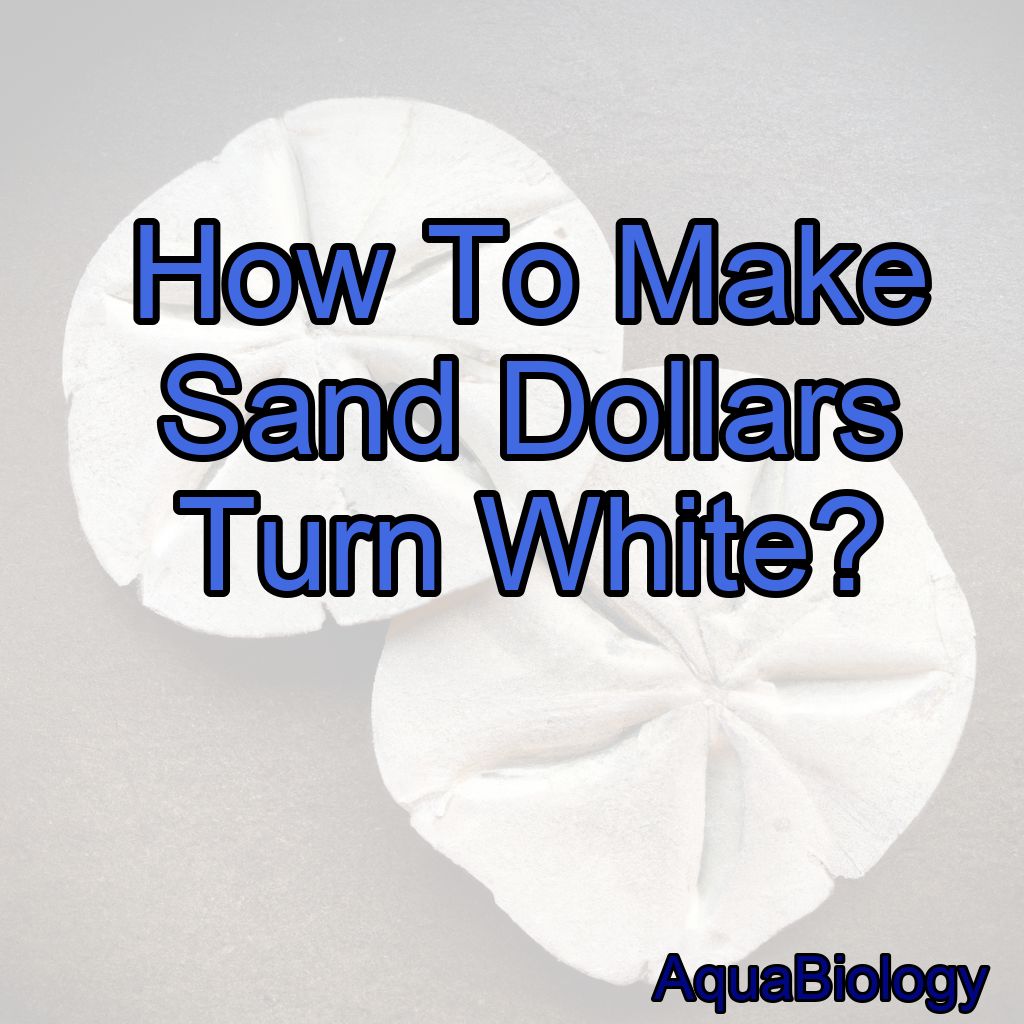As a marine biologist, I have always been fascinated by the beauty and intricacy of sand dollars.
Soak sand dollars in a solution of 50% water and 50% bleach for 15 minutes, then rinse and let them dry in the sun.
These delicate creatures are often found on the shores of beaches, washed up by the waves.
While many people may think of sand dollars as being white, in reality, they come in a range of colors, including brown, purple, and green.
However, if you want to turn your sand dollars white, there are a few steps you can take.
Step 1: Collecting Sand Dollars
Before you can turn your sand dollars white, you need to collect them. The best place to find sand dollars is on the beach, where they are often washed up by the waves.
Look for sand dollars that are still intact and have not been damaged. It is important to note that it is illegal to collect live sand dollars in many areas, so be sure to check local regulations before collecting them.
Step 2: Cleaning Sand Dollars
Once you have collected your sand dollars, you need to clean them. This involves removing any debris or dirt that may be on the surface.
The best way to do this is to soak the sand dollars in a mixture of water and bleach for a few minutes. Be sure to wear gloves and work in a well-ventilated area, as bleach can be harmful.
Step 3: Drying Sand Dollars
After cleaning the sand dollars, you need to dry them. The best way to do this is to place them on a towel in a sunny, dry area.
Be sure to turn the sand dollars over every few hours to ensure that they dry evenly.
Step 4: Bleaching Sand Dollars

Once the sand dollars are dry, it is time to bleach them.
This involves soaking them in a mixture of water and bleach for several hours.
The amount of time needed will depend on the size of the sand dollars.
Be sure to check on them regularly to ensure that they do not become over-bleached.
Step 5: Rinsing Sand Dollars
After bleaching the sand dollars, it is important to rinse them thoroughly. This involves soaking them in clean water for a few hours to remove any remaining bleach.
Be sure to change the water several times.
Step 6: Drying Sand Dollars Again
Once the sand dollars have been rinsed, it is important to dry them thoroughly once again. This involves placing them on a towel in a sunny, dry area and turning them over every few hours to ensure that they dry evenly.
Step 7: Finishing Touches
Finally, once the sand dollars are completely dry, you can finish them off by applying a coat of clear acrylic spray. This will help to protect the sand dollars and keep them looking white.
Conclusion: 5 Facts about Making Sand Dollars Turn White
1. Sand dollars come in a range of colors, including brown, purple, and green.
2. To turn sand dollars white, you need to collect them, clean them, dry them, bleach them, rinse them, and dry them again.
3. It is important to wear gloves and work in a well-ventilated area when working with bleach.
4. Applying a coat of clear acrylic spray can help to protect the sand dollars and keep them looking white.
5. It is important to check local regulations before collecting sand dollars, as it is illegal to collect live sand dollars in many areas.
FAQs
How long until a sand dollar turns white? Sand dollars do not turn white naturally.
Dead sand dollars may turn white due to the loss of their outer layer of tiny spines and the exposure of their white skeleton. However, this process can take varying amounts of time depending on factors such as the temperature, moisture, and presence of predators in the environment.
Why isn’t my sand dollar turning white?
Sand dollars turn white when they are dead and their soft tissues have decomposed, leaving only the hard shell.
If your sand dollar is still alive, it will not turn white.
Additionally, some species of sand dollar may not turn completely white and may retain some of their natural coloration.
How do you whiten a sand dollar? It is not recommended to whiten a sand dollar as it can damage the delicate structure of the shell.
Instead, gently clean it with water and a soft brush and allow it to dry naturally.
How long does it take for sand dollars to turn white?
Sand dollars do not turn white over time.
They are naturally white or gray in color.
How do you make sand dollars completely white? To make sand dollars completely white, they should be soaked in a solution of bleach and water for several hours until they turn completely white.
However, it is important to note that this process can damage the sand dollar’s delicate structure, so it should be done with caution. It is also illegal to collect live sand dollars in some areas, so it is important to check local regulations before attempting to bleach sand dollars.
Will hydrogen peroxide whiten sand dollars?
Yes, hydrogen peroxide can be used to whiten sand dollars.




